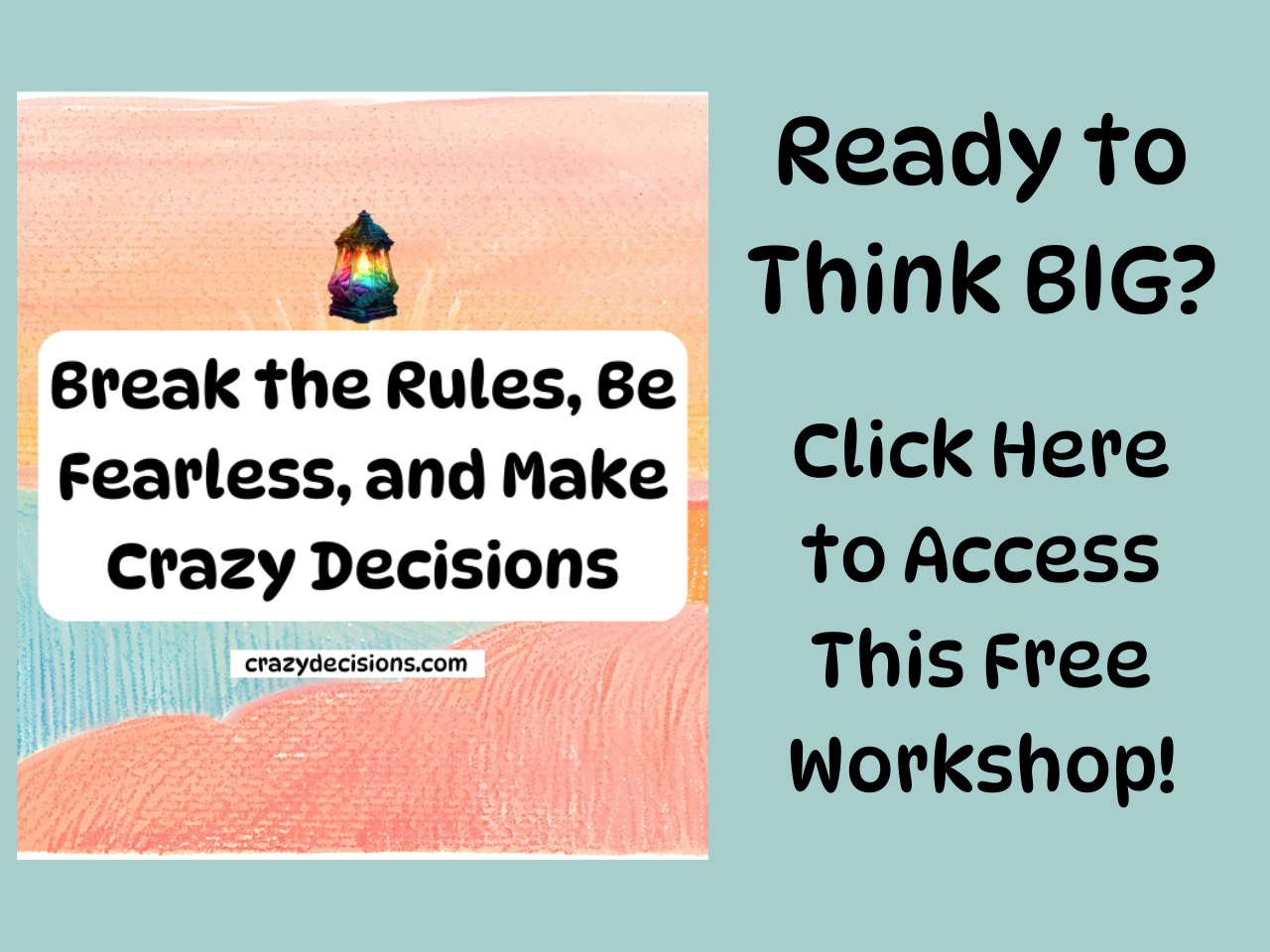
How Small Risks Can Boost Your Confidence and Transform Your Decisions
Confidence isn’t something you’re born with.
It’s something you build, brick by brick, one small choice at a time.
For digital entrepreneurs, this couldn’t be more crucial. Every decision, from launching a new offer to pressing "go" on a risky campaign, demands a layer of boldness that doesn’t magically appear overnight.
The Confidence-Action Loop is where the magic happens. It’s about taking small, purposeful actions that snowball into big-time bravery.
And guess what? It all starts with the tiniest risk.
Table of Contents
Understanding the Confidence-Action Loop
The Psychology Behind Risk-Taking
Building a Risk-Taking Mindset
Steps to Implement the Confidence-Action Loop
Common Fears in Entrepreneurship
Understanding the Confidence-Action Loop
The Confidence-Action Loop is one of those cycles that can totally flip your approach to taking risks.
It’s simple yet transformative: confidence grows when you take action, and action becomes more natural when you’re confident.
Like a snowball rolling downhill, it gains momentum, but you’ve got to start with that first tiny push.
For digital entrepreneurs trying to level up, this is a practical strategy.
What is Confidence?
Confidence isn’t just walking into a room with your head held high.
At its core, it’s the belief that you can handle whatever life throws your way.
This belief fuels your decisions, big and small, and gives you the oomph to keep stepping outside your comfort zone.
Confidence isn’t static. You don’t just “get it” and keep it forever.
It’s more like a muscle, you build it over time through use. Sitting on the sidelines doesn’t strengthen it, taking small, consistent risks does.
Psychologically, confidence takes root in past experiences.
The more wins (even tiny ones) you rack up, the more evidence your brain has to tell you, “Hey, you’ve got this!”
Self-doubt creeps in when you focus too much on areas where you feel lacking. Confidence starts when you reframe those thoughts, focusing on incremental progress instead of overwhelm.
The Role of Action
Confidence doesn’t just pop up from thin air. It’s fueled by action, even if those actions feel microscopic at first.
Think of action as the ignition switch for confidence. No matter how much you read or plan, real growth starts with movement.
Taking action, especially when it feels a bit risky, creates proof for your brain.
Each small step chips away at that fear of failure and replaces it with the habit of doing. Over time, those small wins build a sturdy foundation of self-trust. When you see yourself as someone who takes action, your confidence skyrockets.
But be warned: overthinking is action’s worst enemy.
Analysis paralysis can keep you glued in place, convincing you the stars must perfectly align before you act. Nope.
Action breaks that cycle, like ripping off a Band-Aid, your first step doesn’t need to be perfect. It just needs to happen.

Why Small Risks Matter
Taking risks isn’t just about adrenaline or being a daredevil.
It’s the glue that holds progress together. Your confidence builds when you push just a little past your comfort zone.
Small, manageable risks aren’t fluffy ideas, they’re real, tangible steps that create proof you can handle challenges.
The Psychology Behind Risk-Taking
Your brain operates like a risk calculator, constantly scanning for danger.
It’s designed to keep you alive, not get you promoted, start a business, or, heaven forbid, launch a high-stakes campaign. The trick? Understanding how fear and risk tie together.
When faced with something uncertain, your brain activates the amygdala, the part responsible for the fight-or-flight response.
It’s what keeps you from stepping into oncoming traffic, but it’s also why you hesitate before hitting “publish” on your first marketing funnel.
Your brain doesn’t differentiate. It processes emotional risks, like potential embarrassment, in much the same way as physical threats. (That’s why your palms sweat during a big pitch, thanks, survival instincts!)
Repeating small risks rewires this response. Each successful step teaches your brain, “Hey, the world didn’t end!” Over time, you’ll start to notice less hesitation and more willingness to dive in.
It’s a cycle: fear → action → evidence → less fear. Lather, rinse, repeat.
Building a Risk-Taking Mindset
A risk-taking mindset isn’t something you wake up with one day. It is built.
The good news? You don’t need to overhaul your life to get started.
Here are some simple yet effective strategies you can try:
Start small. If jumping into the deep end feels overwhelming, start with the kiddie pool. Take risks that feel manageable but slightly uncomfortable. These micro-actions add up fast.
Celebrate wins. Did you step up and share your thoughts during a brainstorming session? Amazing! Give yourself credit for taking the leap, no matter the size.
Reframe failure. Instead of seeing failure as the end, picture it as a step forward. Mistakes often bring clarity, teaching you what works (or doesn’t). Remember, even failed experiments count as progress.
Track your progress. Keep a journal or notes app handy to write down each action you take, even small ones. Looking back at your collection of wins is a confidence booster on tough days.
The truth is, risk-taking isn’t an all-or-nothing deal. You build it stack by stack, just like Legos. Every small risk nudges you closer to bigger wins, personally and professionally.

Steps to Implement the Confidence-Action Loop
The Confidence-Action Loop isn’t a secret sauce reserved for a select few. It’s a repeatable process you can tap into today.
Whether you're tackling a project or debating a tough decision, knowing how to break it into actionable steps can make all the difference.
Identify Your Comfort Zone
Your comfort zone, by definition, is where everything feels safe and familiar. Staying there keeps you stuck.
To start nudging yourself out, you’ve got to pinpoint where your limits currently lie.
Ask yourself these questions:
What tasks or decisions feel effortless right now?
Is there something you avoid because it feels too intimidating?
Where do you consistently say “no thanks” instead of “I’ll try”?
Write down the answers. (Don’t overthink it—just jot down your gut reactions.) You might notice clear patterns.
Maybe you’re great at brainstorming but freeze when it’s time to present those ideas. That’s solid data to work with.
Once you define the edges of your comfort zone, you can start stretching them, one small step at a time.
Set Small, Achievable Goals
Thinking too big too soon can lead straight to overwhelm. Instead, focus on bite-sized goals.
Think of it like training for a marathon; you wouldn’t run 26 miles on day one.
You’d start with a mile, or even half a mile, and build from there.
Here are some tips for setting goals that actually stick:
Be specific. Instead of saying, “I want to get better at public speaking,” try, “I’ll share one idea at the next team meeting.”
Make it measurable. Can you track whether you did it or not? If the goal is unclear, tweak it until you can.
Focus on progress, not perfection. Your goal isn’t about nailing it; it’s about doing it.
Start with something so manageable it almost feels laughable. The point is to set yourself up for a win, even if it’s tiny.
Building confidence happens when you see that success is possible, step by step.
Take Action and Reflect
Ready for the fun part? Action is where your confidence loop officially kicks off.
Do the thing. Even if it feels awkward. Even if it’s not perfect.
Afterward, take a moment to reflect. What worked? What didn’t?
This isn’t about beating yourself up, it’s about gathering clues. Think of it like a science experiment.
You're testing a hypothesis (aka, "Can I handle this?") and learning from the results.
Ask yourself:
Did I gain more confidence just by trying?
What felt easier than expected?
What’s one tweak I could make for next time?
Reflection solidifies the lesson, so your brain gets the memo: Taking action isn’t as scary as it seems. The more you practice, the quieter those self-doubting thoughts become.

Overcoming Fear and Doubt
Fear and doubt can feel like your personal shadow, constantly lurking behind every decision you make.
Whether it's launching your first product, raising your prices, or admitting you don’t have all the answers, these emotions have a way of turning up at the worst times. But here’s the thing: they’re universal.
You’re not alone in feeling them, and better yet, you’re not stuck with them.
Fear and doubt can be managed, tamed, and even used as fuel for your next bold move.
Common Fears in Entrepreneurship
Being a digital entrepreneur sounds cool until fear sneaks in and starts picking apart your confidence. Does this sound familiar?
Fear of failure: "What if I flop, lose money, or totally embarrass myself?"
Fear of success: Yep, it’s a thing! "What if I can’t handle growth or live up to expectations?"
Fear of competition: "Am I good enough when others seem miles ahead?"
Fear of rejection: Whether it’s a potential client ghosting you or a pitch getting declined, the sting is real.
Fear of the unknown: Not knowing outcomes can leave you frozen, clinging to comfort zones.
It doesn’t matter if you’re just starting out or scaling to the next level, these fears are normal.
They’re pesky, sure, but not insurmountable. The trick is recognizing them for what they are: stories your brain tells to keep you safe.
Techniques to Manage Fear
So, how do you deal when fear and doubt raise their voices? You outsmart them. Try a mix of these techniques tailored to calm your nerves and boost your mojo:
Mindfulness: Have you tried simply pausing and breathing? It sounds basic, but grounding yourself in the present can reduce fear fueled by “what-ifs.” Sit still, focus on your breath for five minutes, and watch the anxious chatter quiet down.
Positive affirmations: Words are powerful. Start your day by telling yourself something encouraging like, “I have everything I need to succeed today.” It’s not fluff. Repeating affirmations helps rewire those spiraling, negative thoughts. I have been using affirmations to help me rewire my own brain towards positivity.
Visualization: Take time to mentally rehearse your success. It’s like practice for your brain, making the real thing feel much less intimidating.
Reframing failures: Instead of dreading a misstep, see it as a stepping stone. Think, “What’s the lesson here?” Growth often comes gift-wrapped in mistakes.
Lean on your tribe: Whether it’s a mentor, coach, or fellow entrepreneurs, sharing fears with trusted people can take their weight off your shoulders.
Small fears thrive when you ignore them.
Shine a light on them with awareness and action, and suddenly they lose some of their power.
Fear doesn’t have to run the show. With practice and the right tools, you can keep it in check and stay on track to crush your entrepreneurial goals.
The Long-Term Benefits of the Confidence-Action Loop
When you combine confidence with action, you’re not just fixing short-term problems, you’re shaping long-term growth.
Every choice, no matter how small, builds the foundation for future success.
The Confidence-Action Loop doesn’t just change how you approach challenges now; it transforms the person you become over time.
Gaining Resilience through Experience
Resilience is skill you earn through repetition. Every time you face a risk, whether it’s tiny or colossal, you’re gearing up for the next one.
Failure doesn’t become this terrifying, all-consuming thing, it becomes a lesson. Think of failures as feedback, not finality.
When you get comfortable taking small risks, your brain starts to adapt.
The more you practice stepping into uncertainty, the stronger your “bounce-back” ability becomes.
You stop fearing mistakes because you’ve proven to yourself that you can recover, learn, and move forward.
What’s cool about building resilience is how it stretches across all areas of your life.
You might start by taking risks in your business, but soon you’ll notice the ripple effect, your confidence to handle personal challenges grows too.
This is the magic of resilience: the more you experience, the tougher you get.
Confidence and action thrive together, creating a cycle that transforms hesitation into momentum.
Small risks serve as stepping stones, proving to yourself that progress is possible one decision at a time.
This isn’t about perfection. It’s about consistency and courage for those “just hard enough” steps.
Start today by acting on one opportunity you've been avoiding, no matter how simple it seems.
Your confidence won’t just grow, it’ll ripple across every area of your entrepreneurial path.
You’re capable of more than you know, and the first risk is the spark to show it. Let the cycle work for you!
Needing some CRAZY in your life? Join the club!
👇

© 2024 Crazy Decisions | All Rights Reserved Worldwide
Crank up the Crazy, Dial Down the Doubt

